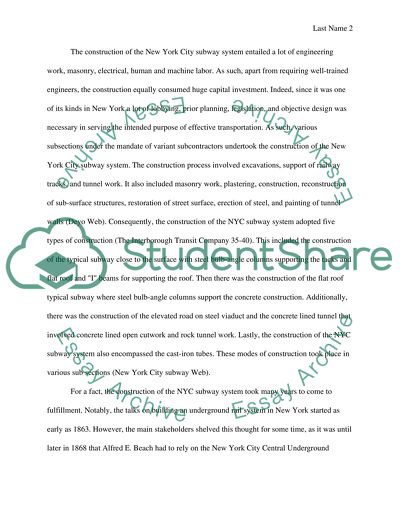Cite this document
(The Construction of New York Citys Subway System Case Study Example | Topics and Well Written Essays - 1250 words, n.d.)
The Construction of New York Citys Subway System Case Study Example | Topics and Well Written Essays - 1250 words. https://studentshare.org/engineering-and-construction/1452144-the-construction-of-new-york-city-s-subway-system
The Construction of New York Citys Subway System Case Study Example | Topics and Well Written Essays - 1250 words. https://studentshare.org/engineering-and-construction/1452144-the-construction-of-new-york-city-s-subway-system
(The Construction of New York Citys Subway System Case Study Example | Topics and Well Written Essays - 1250 Words)
The Construction of New York Citys Subway System Case Study Example | Topics and Well Written Essays - 1250 Words. https://studentshare.org/engineering-and-construction/1452144-the-construction-of-new-york-city-s-subway-system.
The Construction of New York Citys Subway System Case Study Example | Topics and Well Written Essays - 1250 Words. https://studentshare.org/engineering-and-construction/1452144-the-construction-of-new-york-city-s-subway-system.
“The Construction of New York Citys Subway System Case Study Example | Topics and Well Written Essays - 1250 Words”. https://studentshare.org/engineering-and-construction/1452144-the-construction-of-new-york-city-s-subway-system.


